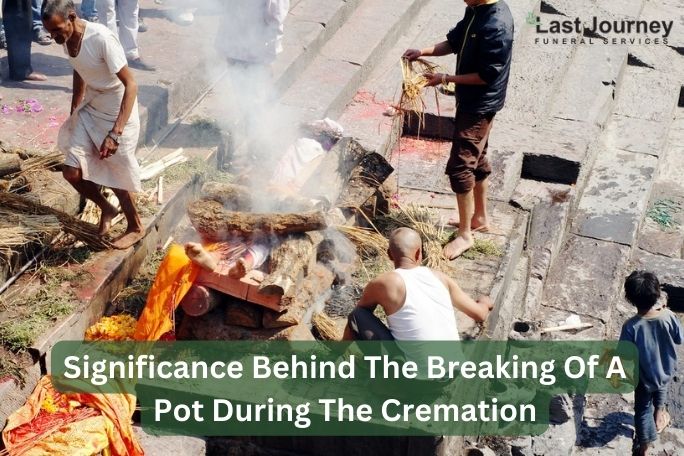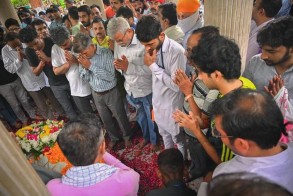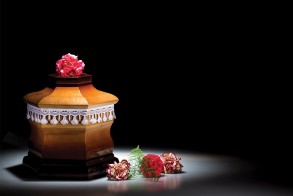Lastjourney Blog
What Is The Symbolic Significance Behind The Breaking Of A Pot During The Cremation Ritual In Hinduism?

 Table of Contents
Table of Contents- What is the right way to perform the custom, "Breaking of Earthen Pot" during cremation?
- What are the compelling reasons behind the custom of "Breaking earthen pot" while cremating the deceased body?
- What is the logical reason behind the custom of "Breaking the earthen pot filled with water" during cremation?
- Why it is essential to walk around the pyre on which the deceased body is placed?
- What are the other DOs and DONTs before, during, and after the cremation according to Hindu scriptures?
Reading Time: 3 minutes
The dignified rituals offered after the demise of a person in the Hindu religion ensure the peaceful salvation or incarnation of the departed soul. A series of righteous last rites are performed according to the direction of the Hindu texts and scriptures. One of the most significant last rites, Cremation includes several customs that are considered morally, religiously and scientifically fit for the deceased's family as well as the departed soul.
"Breaking an earthen or clay pot" during cremation is also a significant custom performed by the lead mourner during the cremation. It holds great symbolism towards the departed soul.
What is the right way to perform the custom, "Breaking of Earthen Pot" during cremation?
Under the guidance of a well-learned Hindu priest "Mahapatra," the dignified cremation ritual is performed. Let's know who performs all the customs including "Breaking of Clay Pot" and how it should be done.
- The lead mourner who is designated to ignite the pyre should place the earthen or clay pot on his shoulder.
- A small hole is made in the earthen pot that is filled with water.
- Now the lead mourner places it on the shoulder and revolves around the pyre clockwise and at last anti-clockwise for once.
- At the end, the lead mourner drops the empty clay pot backward side and it breaks into pieces.
What are the compelling reasons behind the custom of "Breaking earthen pot" while cremating the deceased body?
Breaking the clay pot denotes several messages which are as -:
- It signifies to the departed soul that it is the time to leave the decreased body and lead itself toward the path of salvation or incarnation.
- Here the earthen or clay pot depicts the dead body and the water filled into it is the soul. The breaking of the pot depicts that the human body will be destroyed one day and it will be merged into the soil or earth in the end.
- The slow flow of the water from the whole in the earthen pot depicts the "gradually passing time" and when the water comes to the end it signifies to the soul that the body is no longer the home of the soul.
- Another representation of the breaking of the clay pot is, that it marks the ending of all the relationships and worldly attachments present on the earth. It allows the departed soul to find a new home in the form of the human body and begin its new journey.
What is the logical reason behind the custom of "Breaking the earthen pot filled with water" during cremation?
Apart from the religious causes that strengthened the performing of clay pot custom during the cremation, a logical reason is also considered compelling enough.
In the past decades, the cremation of Hindu people was performed in the open fields instead of river banks. Therefore the water dropped by the earthen pot makes the certain area of the field completely wet. It ensured that the fire would not spread ahead of the demarcated cremation area. This is how the fields were saved from the fire of the cremation ritual in ancient times.
Related: What Is The Reason Behind Why Son In Law Doesn’t Go To The Funeral?
Why it is essential to walk around the pyre on which the deceased body is placed?
As mentioned above, while performing the custom of breaking an earthen pot, the lead mourner must take clockwise rounds around the pyre and at the end one round in an anti-clockwise direction.
These rounds of "Parikrama" denote -:
- Respect Towards The Departed Soul - Through walking around the deceased body the lead mourner expresses gratitude towards the soul regarding the immense contribution in each one's life.
- Taking permission from the soul - When the lead mourner revolves around the pyre with the earthen pot full of water, he asks permission from the soul to surrender the deceased body to the "Fire" (Agnidev). It further leads to the merger of the dead body into the five elements of "Panchtatva" and attain a new body to begin the new life journey.
What are the other DOs and DONTs before, during, and after the cremation according to Hindu scriptures?
The significance of "Garunpuran" in the Hindu religion is quite remarkable. Here are some DOs and DONTs mentioned in the sacred scripture of Hinduism "Garunpuran" that must be followed by the lead mourner as well as the family members of the deceased person.
- Do not look behind towards the cremation place after conducting the whole ritual. It is believed that the soul strives for returning to the home with loved ones which further causes difficulty in attaining peace and salvation.
- Use small wooden logs instead of bigger ones to decorate or ignite the pyre.
- After reaching the home the persons included in the cremation ritual should touch an iron piece, water, stone and fire before entering the home.
- The close family members of the deceased person should not visit any temple after returning from the cremation ground.
- The lead mourner should avoid consuming milk and other edibles made up of milk after returning from the cremation ground.
What does the custom of "Breaking the earthen pot" during the cremation signify?
Who should perform this custom during the cremation rite?
What is the meaning of flowing water from the earthen pot through a hole?
Your email address will not be published. Required fields are marked *












